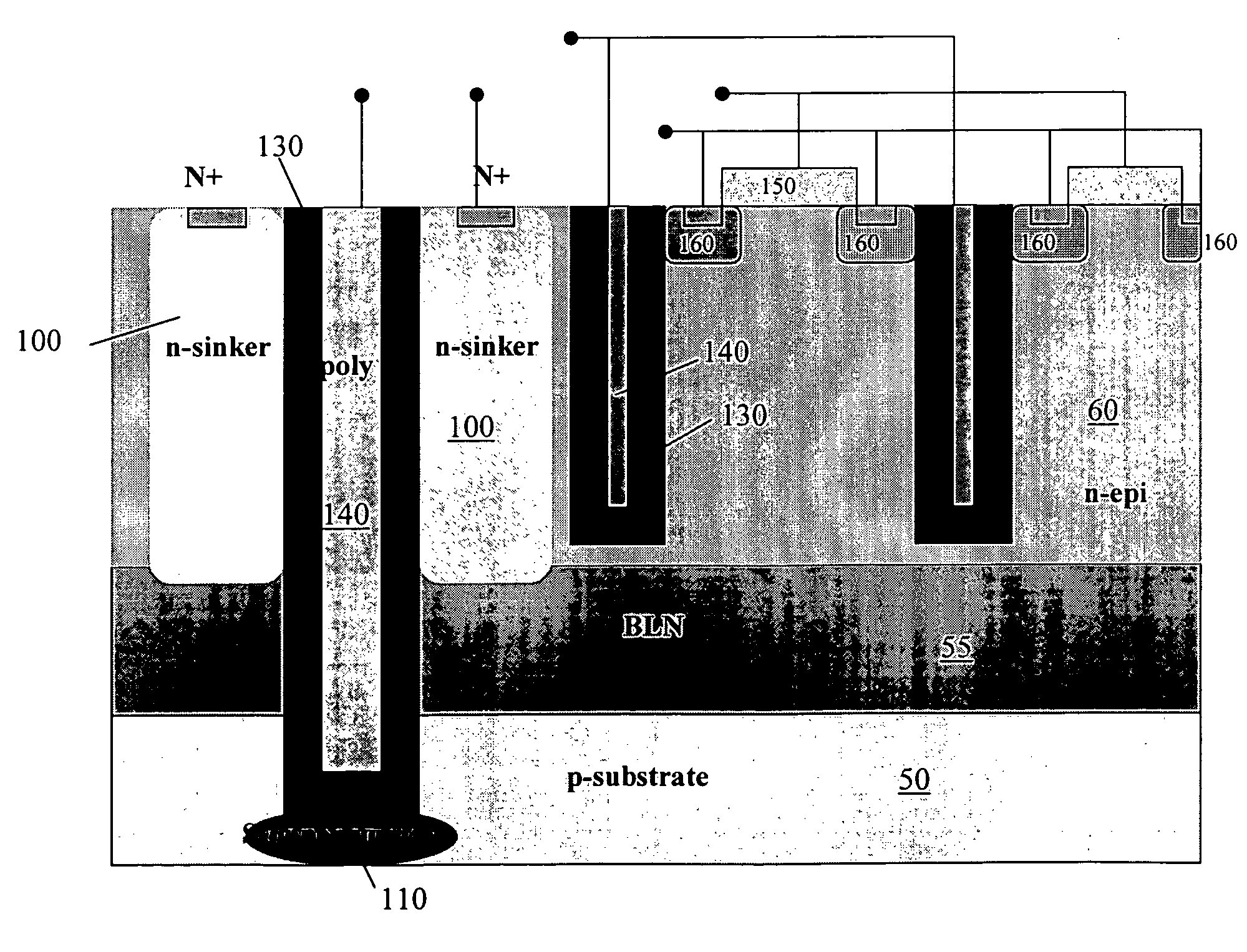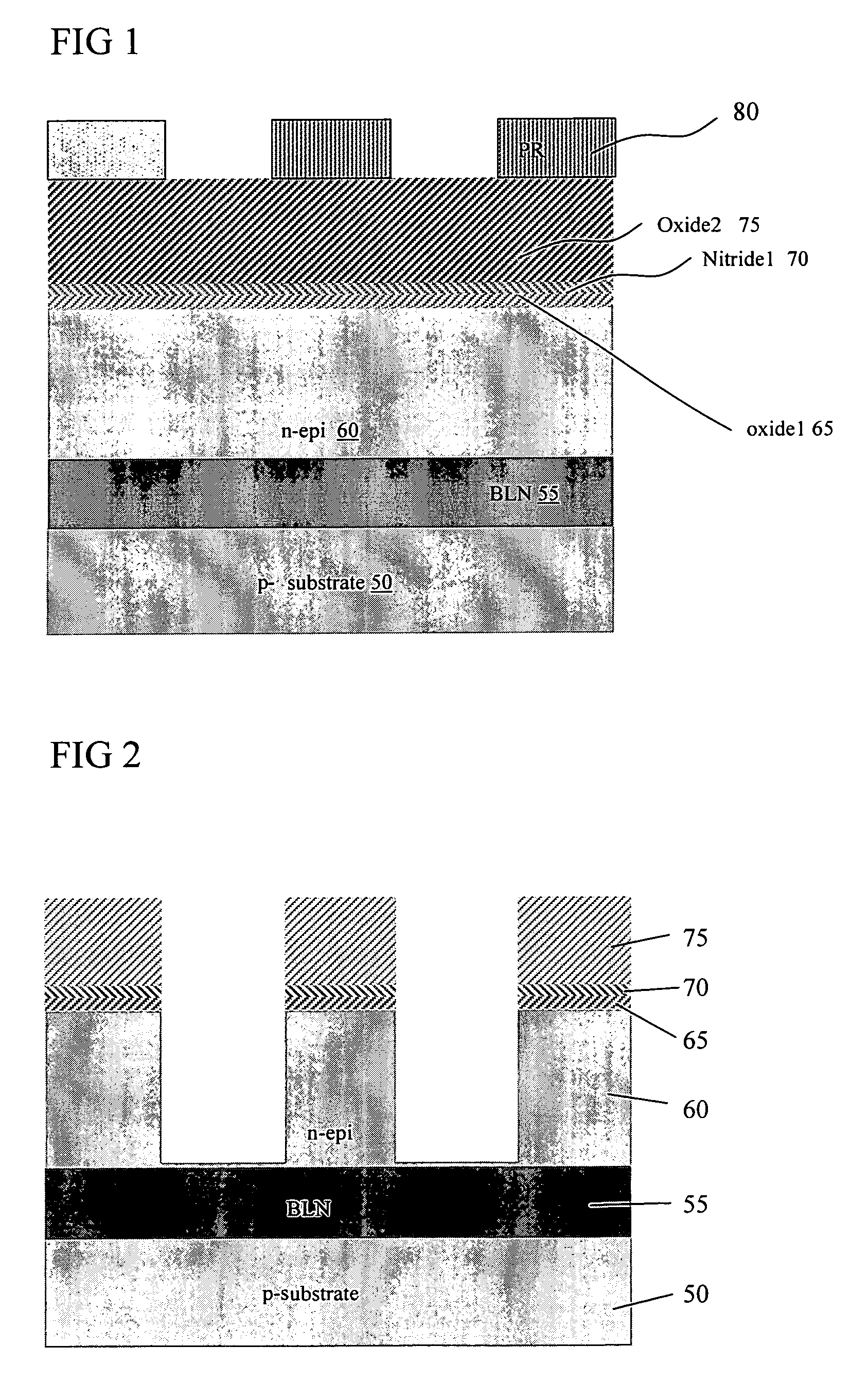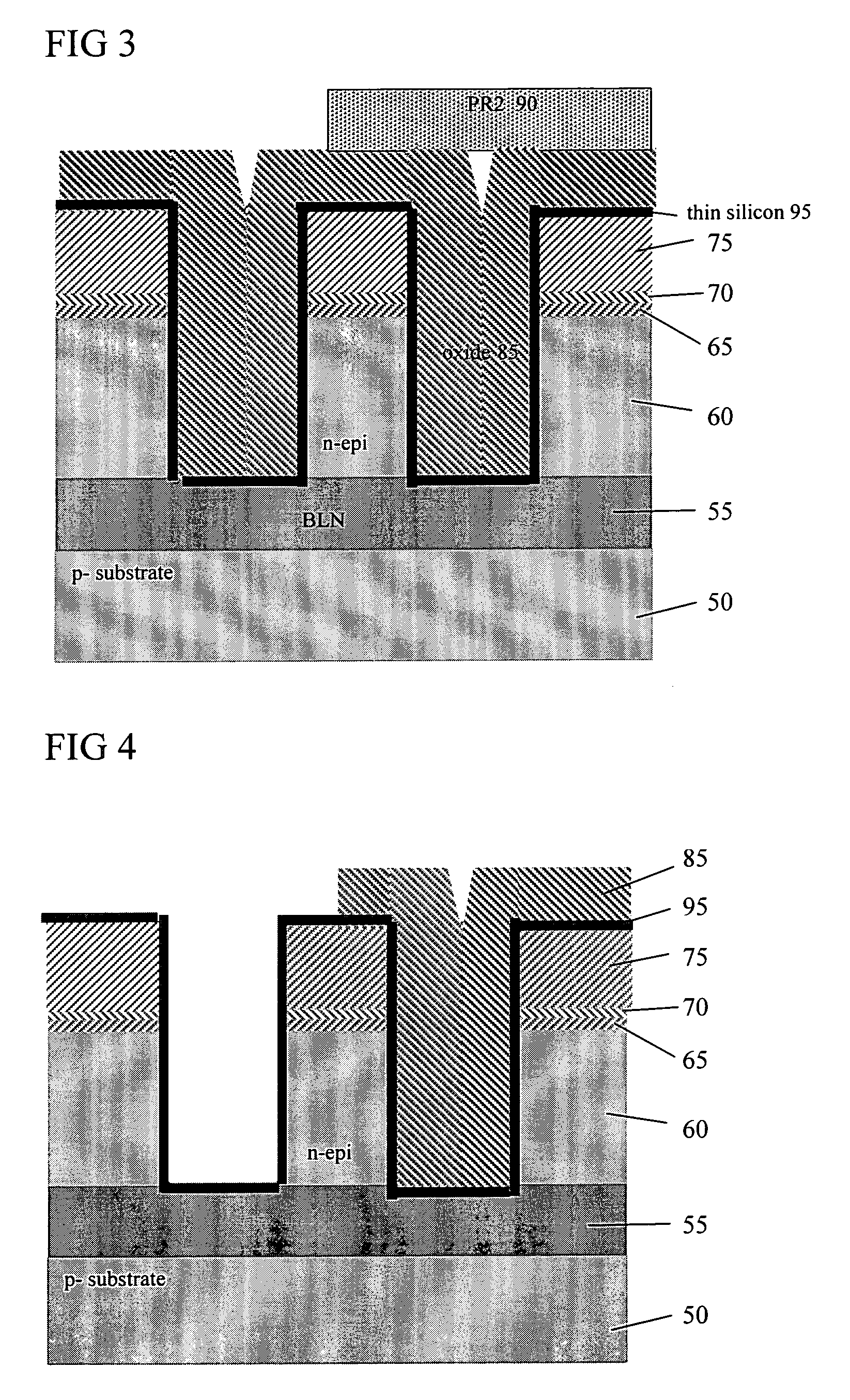Double trench for isolation of semiconductor devices
a technology of semiconductor devices and trenches, applied in the direction of semiconductor devices, basic electric elements, electrical equipment, etc., can solve the problems of symmetry breakage, termination and isolation of such structures, etc., and achieve the effect of improving performance and improving performan
- Summary
- Abstract
- Description
- Claims
- Application Information
AI Technical Summary
Benefits of technology
Problems solved by technology
Method used
Image
Examples
first embodiment
[0047](a) As shown in FIG. 1, on top of a lowly doped substrate of a first conductivity type, e.g. a p-substrate (˜1015-1016 atoms / cm3) 50 for example of silicon, and a highly doped buried layer of a second conductivity type, e.g. a highly doped buried n-type buried layer (˜1018-1019 atoms / cm3) 55, a moderately doped epitaxial layer of the second conductivity type, e.g. a moderately doped n-epi (˜1015-1016 atoms / cm3) layer 60 is grown. The concentration and thickness of the n-epi layer 60 is preferably tuned for optimal performance of the device, and is as such dependent on the targeted breakdown voltage Vbd. The thickness will be in the order of 3-10 μm for the voltage range of interest (50-200V). A thin insulating layer such as an oxide layer 65 (oxide1), having a thickness of about 15-40 nm, is grown on top of the n-epi layer 60. A thin insulating layer such as a thin nitride layer 70 (nitride1) having a thickness, for example of 20-50 nm, is subsequently deposited. Then, a thick...
PUM
 Login to View More
Login to View More Abstract
Description
Claims
Application Information
 Login to View More
Login to View More - R&D
- Intellectual Property
- Life Sciences
- Materials
- Tech Scout
- Unparalleled Data Quality
- Higher Quality Content
- 60% Fewer Hallucinations
Browse by: Latest US Patents, China's latest patents, Technical Efficacy Thesaurus, Application Domain, Technology Topic, Popular Technical Reports.
© 2025 PatSnap. All rights reserved.Legal|Privacy policy|Modern Slavery Act Transparency Statement|Sitemap|About US| Contact US: help@patsnap.com



